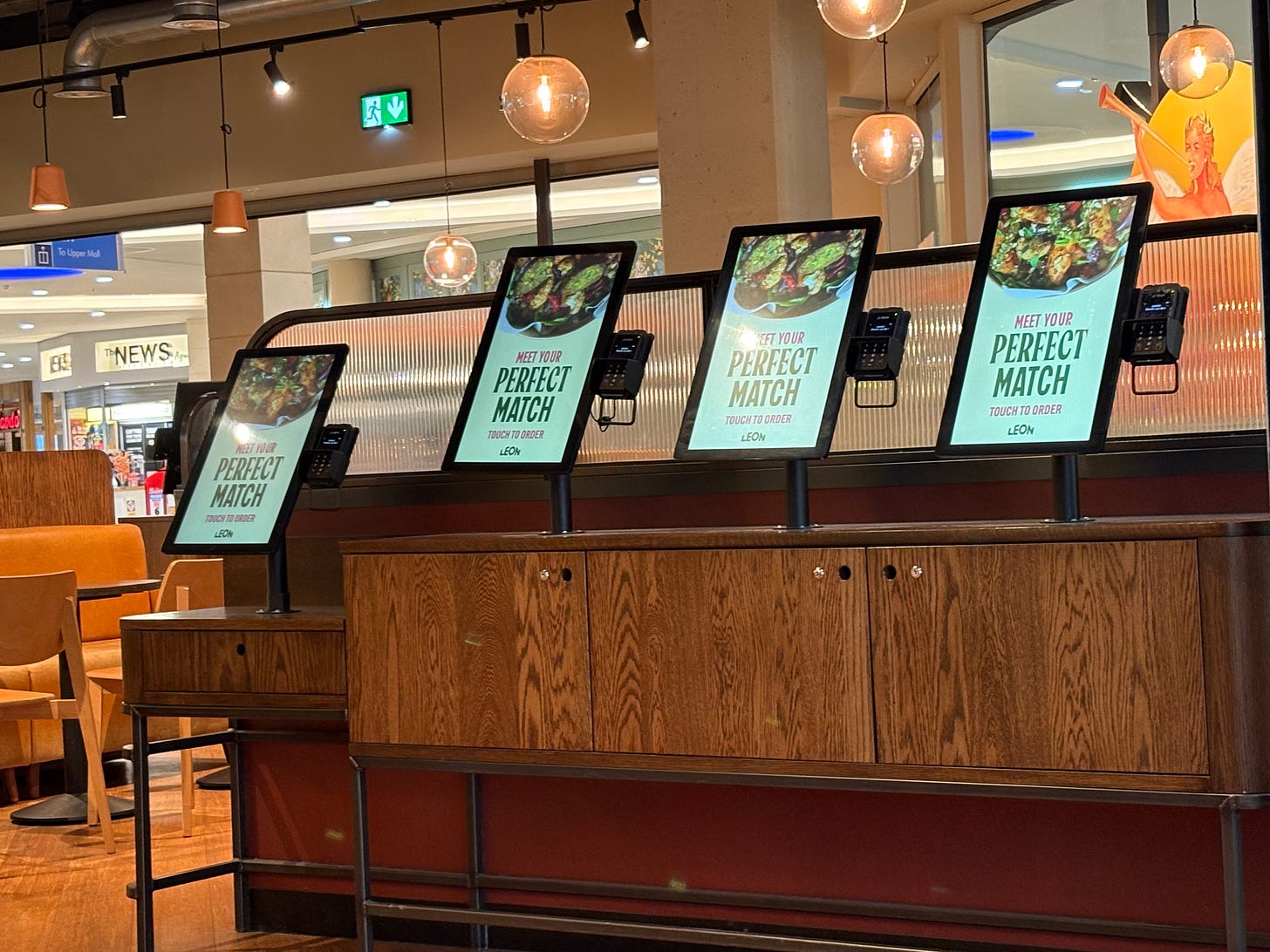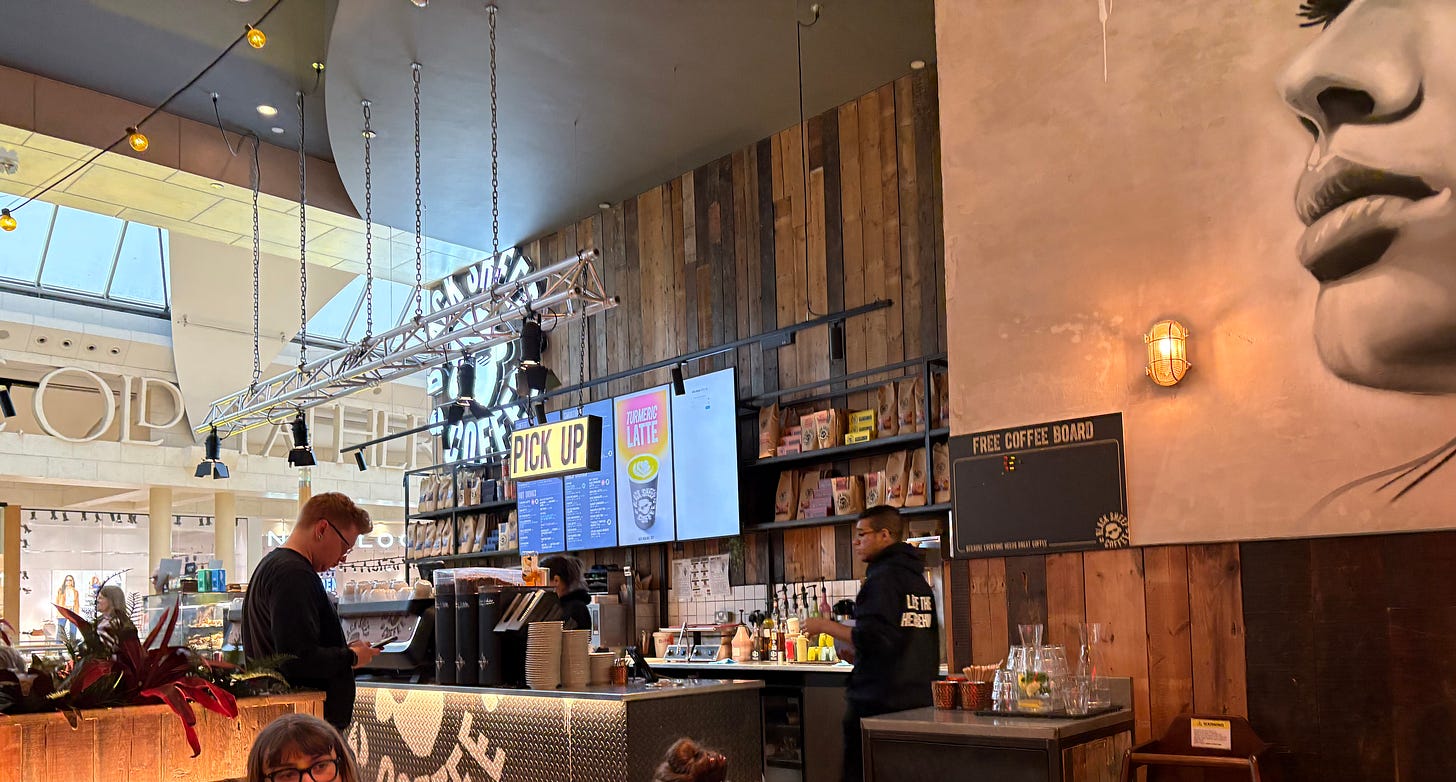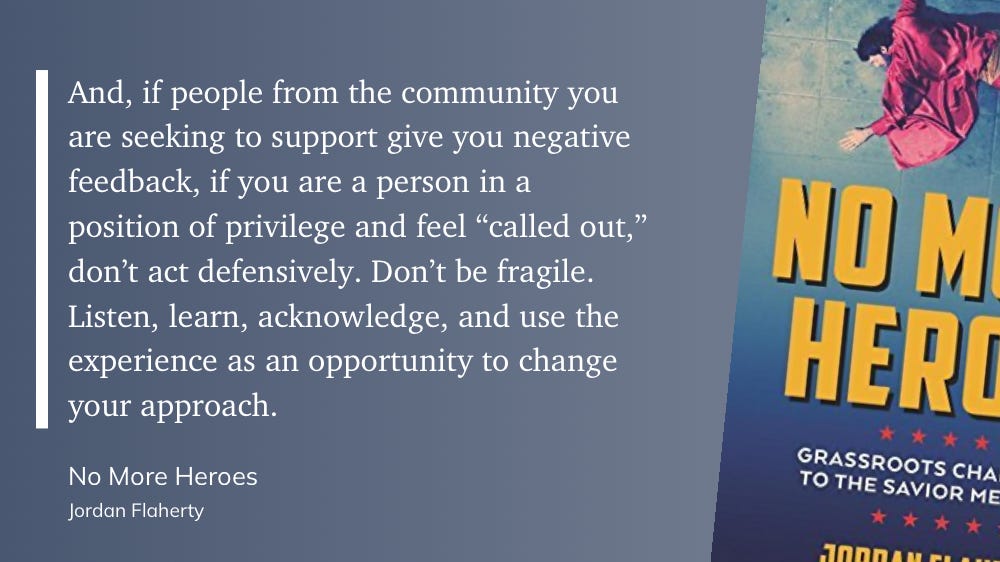You can listen to the main article in this newsletter (I read it).
Self-service screens are becoming increasingly common in restaurants, cafes, and other fast-paced environments like airports, stations and shopping centres across the UK. At Bluewater Shopping Centre last week, I noticed that some restaurant chains, such as Black Sheep Coffee and Leon, have introduced these screens at their entrances to streamline the ordering process. So, they no longer take orders at the counter; instead, everyone must go to the screens or use their app to get food and drinks.
While this can be progress in some ways, it raises some questions about accessibility. Are these screens really an improvement for disabled customers, or do they create new barriers?
Some benefits, but not for all
Self-service screens can provide certain advantages for some disabled customers, particularly those with speech impairments and even wheelchair users:
Lower Screens for Wheelchair Users: One notable improvement I saw was at least one lower screen at each location. The screen was at the end of the row, with a lot of space next to it and leg space under the table. This allowed me to access the interface without assistance. For wheelchair users like myself, who often struggle with high counters and barriers to communication at traditional ordering points, this setup felt quite inclusive. I didn’t have to shout from below, and the barista didn’t have to yell at me. I’m also very short-sighted; reading the menu on the screen was much easier than on the wall behind the coffee bar.
Reduced Communication Barriers: Ordering via a screen eliminates the need for verbal communication, which can sometimes be challenging for people with speech impairments and deaf people. The self-service screens allowed me to place my order independently and at my own pace.
Shorter waiting times: Waiting in a queue can be a barrier for older and disabled people. The screens reduce or even eliminate waiting times while standing. With an app, customers can approach the table directly and order while sitting.
Potential for App Integration: Many restaurants have mobile apps in addition to their self-service screens to take the order. This can be an accessibility improvement if the app is correctly coded. Or it can create another barrier if not. Apps allow customers to order directly from their table, bypassing the need to navigate to the front or interact with a screen. When designed with accessibility in mind—such as compatibility with screen readers or voiceover technology—these apps can be convenient for disabled customers, especially those who are blind or visually impaired and can use their mobile phones.
The Challenges: Barriers Still Exist
Despite the promise of self-service screens, they are far from a perfect solution. Several barriers remain, both in the design of the screens themselves and in the overall customer experience:
The Pickup Process: While I found ordering on the screens and later on the app relatively accessible, the process of picking up food and drinks at the counter is still a barrier. As a wheelchair user, carrying items to a table can be difficult, and I often rely on staff to assist me. At Black Sheep Coffee, the barista kindly carried my order to my table when she noticed I was a wheelchair user - she even remembered my name when I ordered a second time and brought it to the table directly without me going to her. Going to the counter remains a barrier for many disabled customers. I prefer apps where you can add the table number, and the order comes to you without going to the bar.
This also eliminates this weird calling names out process, which is neither accessible, especially not for deaf customers, nor very friendly.
Accessibility for Blind Customers: Self-service screens can be a barrier for blind or visually impaired people who cannot see the interface if the screens don’t have screen readers, and even then, it’s not ideal. While apps offer an alternative, they must be optimised for accessibility, including seamless voice-over support. During my visit, I tested the apps. While they were generally accessible for reading the menus and navigating options, the checkout process was a hurdle and poorly designed for voice-over users, making it nearly impossible to complete an order independently. So, all the benefits of an app for blind people were ruined with the last step.
Lack of Staff Support at Screens: Another concern is the absence of staff support at the self-service screens. While these systems are designed to reduce staffing levels, businesses must ensure that staff can assist disabled or older customers who may struggle with the technology. Without this support, these screens risk excluding entire groups of people, especially those who are less tech-savvy or who can’t read the screens.
Maintain the lower screen: While the first visit to both places was perfect, the second visit wasn’t as seamless, as the lower screens were broken in both restaurants. I talked to staff; one restaurant damaged the screen when a fridge was delivered, and the other had a software issue. But to be fair, I was approached immediately when I entered because they knew the lower screen was broken and offered help proactively.
What Does True Accessibility Look Like?
To create a genuinely accessible customer experience, businesses must consider some important points:
1. Design with Universal Accessibility in Mind: Self-service screens should accommodate as many people as possible.
2. Complement Screens with Table Service Options: Businesses should consider offering to add table numbers at the screens or app-based ordering with delivery to the table. This eliminates the need for customers to carry their food and ensures a seamless experience for those with issues carrying their food and drinks.
3. Train Staff to Assist: Even with the best technology, human support remains essential. Staff should be trained to assist disabled customers at screens, counters, or tables as needed, ensuring everyone enjoys the visit.
4. Optimise Apps for Accessibility: Mobile apps must work with assistive technologies like voice-over functionality. This includes ensuring that every step of the ordering process, from menu navigation to checkout, is accessible.
5. Seek Feedback from Disabled Customers: The best way to improve accessibility is to listen to those who experience barriers firsthand. Regular feedback from disabled customers can help businesses identify and address gaps in their service.
Self-service screens can be convenient for many customers. However, they are not a one-size-fits-all solution. Businesses must address the barriers these systems create and ensure that all customers can enjoy a seamless and dignified experience.
Some interesting links
Wheelchair users were denied access onto London buses more than 400 times last year as a result of ramps failing and passengers not being allowed on. I had three refusals in the past 6 months alone and I witnessed one today of another passenger. None of them were ramp-related. The drivers just couldn’t be bothered. TfL needs to put some screws on the contracting companies. After they have successfully improved the bad maintenance problem of ramps nearly two decades ago, bus driver behaviour must be next.
Same issues, different country - accessibility remains an afterthought when it comes to transport, say advocates in New Zealand.
The Department for Transport has published new “Disability, accessibility and blue badge statistics”.
In 2023:
the average number of trips made by disabled adults in England was 25% lower than the average number of trips made by non-disabled adults. This difference was similar to previous years.
disabled adults made an average of 740 trips per person, compared with non-disabled adults who made an average of 989.
As at 31 March 2024: 2.84 million Blue Badges were held in England, an increase of 10% compared to March 2023.
Especially the last point is interesting because it confirms that there is really an increase in disabled people in our country (say it louder for the people in the back who still think they all fake being disabled to get an excellent assistance service everywhere *rolls eyes*). Blue Badges are not easy to get.
Something to watch
John Kelly chained himself to London buses in the 1990s to protest over a lack of access to transport. He has watched the right to an independent life be steadily eroded. Short Guardian documentary about the 'war' on disabled people and the fight for an independent life.
Some final words
The Accessible Link is a reader-supported publication. So, if you like what you’re reading, consider to
As a paid subscriber you will receive an additional edition every two weeks with best-practice tips on improving accessibility in your organisation.
Who is writing this newsletter?
I’m Christiane Link, and I improve the customer experience in aviation, transport, and travel. I worked as a journalist for over two decades and travelled extensively for business and leisure. I’m a wheelchair user.
Work with me
Whether you're a Customer service director, a Head of Customer Experience, a corporate Accessibility manager, a DEI leader, a transport planner, or a disabled employee resource group member, I can help you to make your organisation more inclusive. You can book me for speaking engagements or hire me as a consultant for your accessibility or DEI strategy, communications advice and other related matters. I have worked for airlines, airports, train operators, public transport providers, and companies in other sectors.
If you want to read more from me, follow me on LinkedIn, Twitter, Bluesky or Mastodon. You can also reply to this email if you want to contact me.
.




